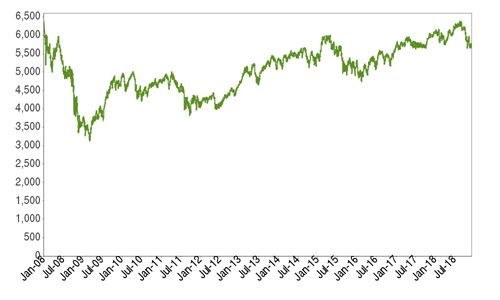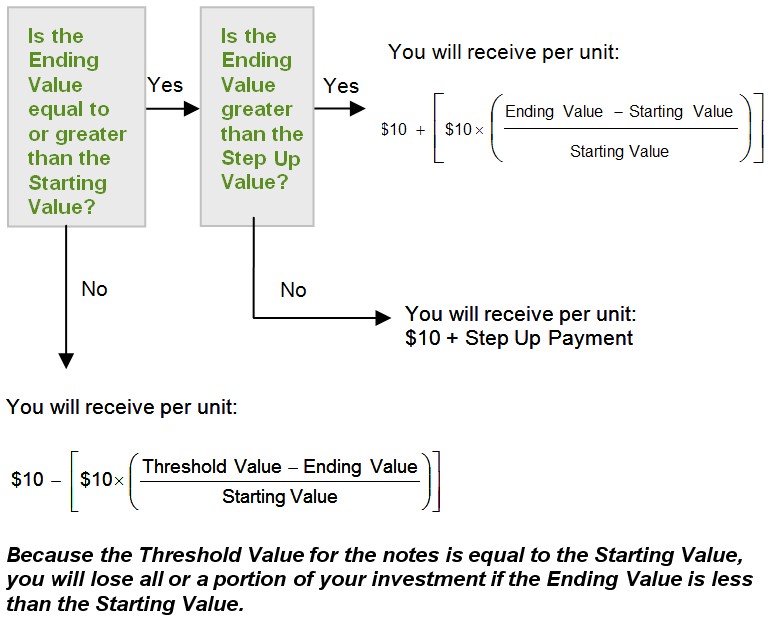Expression_n Expressions that are not encapsulated within an aggregate function and must be included in the GROUP BY Clause at the end of the SQL statement. Aggregate_function This is an aggregate function such as the SUM, COUNT, MIN, MAX, or AVG functions. Aggregate_expression This is the column or expression that the aggregate_function will be used on. These are conditions that must be met for the records to be selected. If more than one expression is provided, the values should be comma separated.
DESC sorts the result set in descending order by expression. The GROUP BY clause groups together rows in a table with non-distinct values for the expression in the GROUP BY clause. For multiple rows in the source table with non-distinct values for expression, theGROUP BY clause produces a single combined row. GROUP BY is commonly used when aggregate functions are present in the SELECT list, or to eliminate redundancy in the output. GROUP BY enables you to use aggregate functions on groups of data returned from a query. FILTER is a modifier used on an aggregate function to limit the values used in an aggregation.
All the columns in the select statement that aren't aggregated should be specified in a GROUP BY clause in the query. ROLLUP is an extension of the GROUP BY clause that creates a group for each of the column expressions. Additionally, it "rolls up" those results in subtotals followed by a grand total.
Under the hood, the ROLLUP function moves from right to left decreasing the number of column expressions that it creates groups and aggregations on. Since the column order affects the ROLLUP output, it can also affect the number of rows returned in the result set. Spark also supports advanced aggregations to do multiple aggregations for the same input record set via GROUPING SETS, CUBE, ROLLUP clauses. The grouping expressions and advanced aggregations can be mixed in the GROUP BY clause and nested in a GROUPING SETS clause. See more details in the Mixed/Nested Grouping Analytics section. When a FILTER clause is attached to an aggregate function, only the matching rows are passed to that function.
The SELECT statement used in the GROUP BY clause can only be used contain column names, aggregate functions, constants and expressions. The HAVING clause is used to restrict the results returned by the GROUP BY clause. The GROUP BY clause groups identical output values in the named columns. Every value expression in the output column that includes a table column must be named in it unless it is an argument to aggregate functions.
GROUP BY is used to apply aggregate functions to groups of rows defined by having identical values in specified columns. The Group by clause is often used to arrange identical duplicate data into groups with a select statement to group the result-set by one or more columns. This clause works with the select specific list of items, and we can use HAVING, and ORDER BY clauses. Group by clause always works with an aggregate function like MAX, MIN, SUM, AVG, COUNT. The GROUP BY clause is used in the SELECT statement .Optionally it is used in conjunction with aggregate functions to produce summary reports from the database.
The queries that contain the GROUP BY clause are called grouped queries and only return a single row for every grouped item. The SQL GROUP BY Statement The GROUP BY statement groups rows that have the same values into summary rows, like "find the number of customers in each country". The GROUP BY statement is often used with aggregate functions ( COUNT() , MAX() , MIN() , SUM() , AVG() ) to group the result-set by one or more columns.
The GROUP BY clause defines groups of output rows to which aggregate functions can be applied. The GROUP BY clause is often used in SQL statements which retrieve numerical data. It is commonly used with SQL functions like COUNT, SUM, AVG, MAX and MIN and is used mainly to aggregate data. Data aggregation allows values from multiple rows to be grouped together to form a single row. The first table shows the marks scored by two students in a number of different subjects. This syntax allows users to perform analysis that requires aggregation on multiple sets of columns in a single query.
Complex grouping operations do not support grouping on expressions composed of input columns. It is not permissible to include column names in a SELECT clause that are not referenced in the GROUP BY clause. The only column names that can be displayed, along with aggregate functions, must be listed in the GROUP BY clause. Since ENAME is not included in the GROUP BYclause, an error message results. The ORDER BY clause specifies a column or expression as the sort criterion for the result set. If an ORDER BY clause is not present, the order of the results of a query is not defined.
Column aliases from a FROM clause or SELECT list are allowed. If a query contains aliases in the SELECT clause, those aliases override names in the corresponding FROM clause. The above query includes the GROUP BY DeptId clause, so you can include only DeptId in the SELECT clause. You need to use aggregate functions to include other columns in the SELECT clause, so COUNT is included because we want to count the number of employees in the same DeptId.
In the result set, the order of columns is the same as the order of their specification by the select expressions. If a select expression returns multiple columns, they are ordered the same way they were ordered in the source relation or row type expression. It filters non-aggregated rows before the rows are grouped together. To filter grouped rows based on aggregate values, use the HAVING clause.
The HAVING clause takes any expression and evaluates it as a boolean, just like the WHERE clause. As with the select expression, if you reference non-grouped columns in the HAVINGclause, the behavior is undefined. If you don't use GROUP BY, either all or none of the output columns in the SELECT clause must use aggregate functions. If all of them use aggregate functions, all rows satisfying the WHERE clause or all rows produced by the FROM clause are treated as a single group for deriving the aggregates.
In the Group BY clause, the SELECT statement can use constants, aggregate functions, expressions, and column names. Here, you can add the aggregate functions before the column names, and also a HAVING clause at the end of the statement to mention a condition. You must use the aggregate functions such as COUNT(), MAX(), MIN(), SUM(), AVG(), etc., in the SELECT query.
The result of the GROUP BY clause returns a single row for each value of the GROUP BY column. The GROUP BY clause is often used with aggregate functions such as AVG(), COUNT(), MAX(), MIN() and SUM(). In this case, the aggregate function returns the summary information per group. For example, given groups of products in several categories, the AVG() function returns the average price of products in each category. Aggregate functions are functions that take a set of rows as input and return a single value. In SQL we have five aggregate functions which are also called multirow functions as follows.
Optionally it is used in conjunction with aggregate functions to produce the resulting group of rows from the database. SQL allows the user to store more than 30 types of data in as many columns as required, so sometimes, it becomes difficult to find similar data in these columns. Group By in SQL helps us club together identical rows present in the columns of a table. This is an essential statement in SQL as it provides us with a neat dataset by letting us summarize important data like sales, cost, and salary. Otherwise, each column referenced in the SELECT list outside an aggregate function must be a grouping column and be referenced in this clause. All rows output from the query that have all grouping column values equal, constitute a group.
The GROUP BY clause arranges rows into groups and an aggregate function returns the summary (count, min, max, average, sum, etc.,) for each group. Like most things in SQL/T-SQL, you can always pull your data from multiple tables. Performing this task while including a GROUP BY clause is no different than any other SELECT statement with a GROUP BY clause.
The fact that you're pulling the data from two or more tables has no bearing on how this works. In the sample below, we will be working in the AdventureWorks2014 once again as we join the "Person.Address" table with the "Person.BusinessEntityAddress" table. I have also restricted the sample code to return only the top 10 results for clarity sake in the result set. When you start learning SQL, you quickly come across the GROUP BY clause. Data grouping—or data aggregation—is an important concept in the world of databases. In this article, we'll demonstrate how you can use the GROUP BY clause in practice.
We've gathered five GROUP BY examples, from easier to more complex ones so you can see data grouping in a real-life scenario. As a bonus, you'll also learn a bit about aggregate functions and the HAVING clause. In this query, all rows in the EMPLOYEE table that have the same department codes are grouped together.
The aggregate function AVG is calculated for the salary column in each group. The department code and the average departmental salary are displayed for each department. The GROUP BY clause is used in a SELECT statement to group rows into a set of summary rows by values of columns or expressions. A subquery with a recursive table reference cannot invoke aggregate functions. Corner cases exist where a distinct pivot_columns can end up with the same default column names. For example, an input column might contain both aNULL value and the string literal "NULL".
When this happens, multiple pivot columns are created with the same name. To avoid this situation, use aliases for pivot column names. SELECT AS STRUCT can be used in a scalar or array subquery to produce a single STRUCT type grouping multiple values together. Scalar and array subqueries are normally not allowed to return multiple columns, but can return a single column with STRUCT type. However, you can use the GROUP BY clause with CUBE, GROUPING SETS, and ROLLUP to return summary values for each group. Adding a HAVING clause after your GROUP BY clause requires that you include any special conditions in both clauses.
If the SELECT statement contains an expression, then it follows suit that the GROUP BY and HAVING clauses must contain matching expressions. It is similar in nature to the "GROUP BY with an EXCEPTION" sample from above. In the next sample code block, we are now referencing the "Sales.SalesOrderHeader" table to return the total from the "TotalDue" column, but only for a particular year. The SUM() function returns the total value of all non-null values in a specified column. Since this is a mathematical process, it cannot be used on string values such as the CHAR, VARCHAR, and NVARCHAR data types. When used with a GROUP BY clause, the SUM() function will return the total for each category in the specified table.
IIt is important to note that using a GROUP BY clause is ineffective if there are no duplicates in the column you are grouping by. A better example would be to group by the "Title" column of that table. The SELECT clause below will return the six unique title types as well as a count of how many times each one is found in the table within the "Title" column.
This statement is used to group records having the same values. The GROUP BY statement is often used with the aggregate functions to group the results by one or more columns. HAVING Clause is used as a conditional statement with GROUP BY Clause in SQL. WHERE Clause cannot be combined with aggregate results so Having clause is used which returns rows where aggregate function results matched with given conditions only. In addition to producing all the rows of a GROUP BY ROLLUP, GROUP BY CUBE adds all the "cross-tabulations" rows.
Sub-total rows are rows that further aggregate whose values are derived by computing the same aggregate functions that were used to produce the grouped rows. This clause is a shorthand for a UNION ALL where each leg of the UNION ALLoperator performs aggregation of each grouping set specified in the GROUPING SETS clause. Similarly, GROUP BY GROUPING SETS (, , ()) is semantically equivalent to the union of results of GROUP BY warehouse, product, GROUP BY productand global aggregate.
When you use a GROUP BY clause, you will get a single result row for each group of rows that have the same value for the expression given in GROUP BY. The INTERSECT operator returns rows that are found in the result sets of both the left and right input queries. Unlike EXCEPT, the positioning of the input queries does not matter.
The USING clause requires a column list of one or more columns which occur in both input tables. It performs an equality comparison on that column, and the rows meet the join condition if the equality comparison returns TRUE. You can include multiple aggregation functions in the PIVOT. In this case, you must specify an alias for each aggregation.
How Do You Use Group By Clause With Sql Statement What Is Its Use These aliases are used to construct the column names in the resulting table. Because the UNNEST operator returns avalue table, you can alias UNNEST to define a range variable that you can reference elsewhere in the query. If you reference the range variable in the SELECTlist, the query returns a STRUCT containing all of the fields of the originalSTRUCT in the input table. The GROUP BY clause divides the rows returned from the SELECTstatement into groups. For each group, you can apply an aggregate function e.g.,SUM() to calculate the sum of items or COUNT()to get the number of items in the groups. Use the GROUP BY clause with aggregate functions in a SELECT statement to collect data across multiple records.
An aggregate function performs a calculation on a group and returns a unique value per group. For example, COUNT() returns the number of rows in each group. Other commonly used aggregate functions are SUM(), AVG() , MIN() , MAX() .
As you can see in the result set above, the query has returned all groups with unique values of , , and . The NULL NULL result set on line 11 represents the total rollup of all the cubed roll up values, much like it did in the GROUP BY ROLLUP section from above. Another extension, or sub-clause, of the GROUP BY clause is the CUBE. The CUBE generates multiple grouping sets on your specified columns and aggregates them. In short, it creates unique groups for all possible combinations of the columns you specify.
For example, if you use GROUP BY CUBE on of your table, SQL returns groups for all unique values , , and . The MIN() function returns the smallest value in the column specified. In this lesson you learned to use the SQL GROUP BY and aggregate functions to increase the power expressivity of the SQL SELECT statement. You know about the collapse issue, and understand you cannot reference individual records once the GROUP BY clause is used.























No comments:
Post a Comment
Note: Only a member of this blog may post a comment.